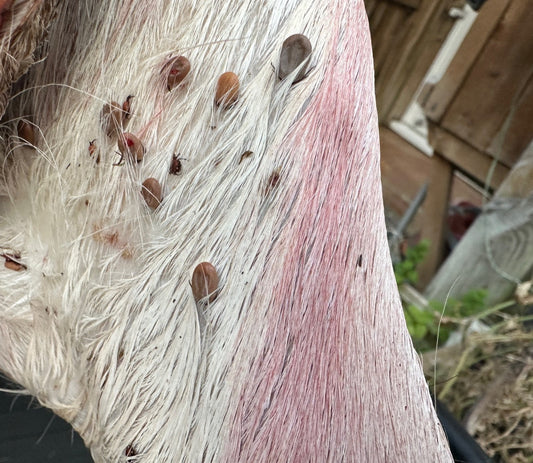As autumn transitions to winter, a fascinating transformation occurs in the countryside: deer begin to shed their antlers. For those observing wildlife, this natural process is a reminder of the cycles defining the lives of these animals. In the UK, roe deer (Capreolus capreolus) are among the first to shed their antlers each year, followed closely by other species like fallow and red deer. But what actually happens when deer shed their antlers, and what biological processes are at play?
The Science of Shedding: A Cyclical Process
Antlers are among the fastest-growing tissues in the animal kingdom, composed mainly of bone and nourished by a dense network of blood vessels. Their growth and eventual shedding are governed by a delicate hormonal cycle that shifts with the seasons. The cycle begins after the rutting season, with antler casting, followed by regrowth in velvet, then hardening into bone, and finally, cleaning of the antlers after the velvet is shed.
For roe deer in the UK, this cycle follows a particular rhythm:
- Antlers Cast: November - December
- Antlers in Velvet: January - March
- Antlers Clean: April - November

Testosterone plays a crucial role in this cycle. Levels peak during the rutting season to support antler growth and maintenance, then gradually drop afterward. This decline triggers an increase in osteoclast activity at the antler base.
Osteoclasts are specialised bone cells responsible for reabsorbing bone tissue, which weakens the connection between the antler and the pedicle (antler base), eventually causing the antler to detach.

Hormonal Shifts and Environmental Triggers
The seasonal daylight cycle (photoperiod) regulates testosterone levels and, consequently, the timing of antler shedding. Deer have specialised cells in their eyes sensitive to changing light, which relay information to the hypothalamus, a brain region controlling hormone production. As daylight hours decrease in autumn, testosterone levels reduce, initiating the antler-shedding process.
However, other factors can also influence shedding times, particularly in roe deer. Stress, poor nutrition, and environmental factors may all affect timing. Early shedding can sometimes be linked to environmental stressors or shock, such as extreme weather or nearby predators/humans. In some cases, an injury sustained during the rut may accelerate the antler-shedding process, with the deer responding to the physiological “shock” by shedding its antlers sooner than usual.
Regrowth and the Velvet Phase
After casting, antler regrowth begins almost immediately. In the UK, roe deer antlers typically start to regrow around January, entering the “velvet” stage, when they’re covered by a soft, vascularised skin. Velvet supplies nutrients and oxygen to the developing bone, supporting rapid growth during the early months of the year. By March, the velvet begins to shed, leaving a clean, hardened antler.

This process is remarkable for its speed and energy demand. During this time, deer often seek out highly nutritious forage, focusing on protein-rich foods to fuel the energy-intensive growth phase. In areas with low food availability, deer may exhibit poorer antler growth, visible in their smaller or asymmetrical antlers by spring.
Evolutionary Purpose of Antlers and Shedding
Antlers serve multiple purposes in the world of deer, acting as symbols of dominance during the rut and as defences against predators and other threats. Shedding antlers each year allows deer to avoid the metabolic costs of maintaining this extra weight, which is especially useful during winter when conserving energy is crucial. By shedding antlers, deer can redirect their energy towards survival and regrowth when food is more abundant in spring.
The UK Context: Roe Deer and Other Native Species
In the UK, roe deer shed their antlers earlier than other species, typically casting them in late autumn before red and fallow deer. This early cycle is likely an adaptation to UK seasonal patterns, allowing roe deer to begin antler regrowth well before other species. Studies, including those conducted by the British Deer Society, document these cycles, highlighting the unique characteristics of roe deer.
For land managers and conservationists, understanding this cycle is essential. Antler sheds in a particular area can indicate seasonal deer movements, helping to inform conservation and management efforts. For instance, if deer shed antlers in a specific woodland, it may reflect their preferred wintering grounds, guiding habitat preservation plans.
Observing the Process
For those interested in witnessing this cycle, late autumn through winter is an ideal time to find shed antlers in the countryside. In areas with high deer populations, such as the South Downs or the New Forest, antlers are often found along well-trodden deer paths. Although collecting antlers may seem a novel activity, it’s important to remember their ecological value, as other wildlife, such as rodents, rely on them for essential nutrients like calcium.
The antler-shedding process is a fascinating cycle underscoring the adaptability and resilience of deer in the UK. Each phase, from casting to regrowth, is a testament to the complex biological and environmental factors shaping the natural world. For roe deer especially, this cycle is closely tied to the changing seasons, embodying both survival and renewal. Observing this cycle can deepen our appreciation for these remarkable animals and the ecosystems they inhabit as autumn and winter progress.






